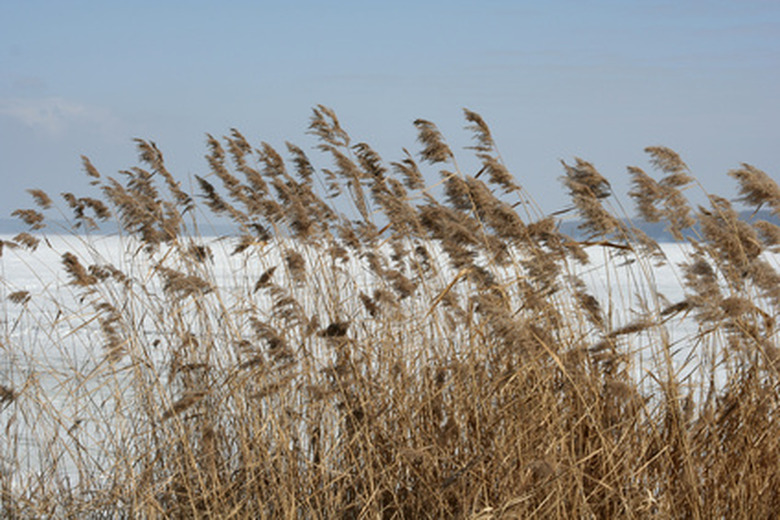How Does Pollution Affect Photosynthesis?
Photosynthesis is the process of converting the inorganic molecules water, carbon dioxide and light into energy in the form of glucose. Plants, algae and some bacteria, known as primary producers in the food web, rely on their photosynthetic capabilities to fuel their cellular processes. Pollution affects photosynthesis and damages overall plant health in many ways. Primary producers' photosynthetic efficiency is not only crucial for their survival, but also vital for all life on Earth as other organisms eat them and breathe the oxygen they produce as a byproduct of photosynthesis.
Types of Air Pollution
Types of Air Pollution
The most damaging air pollutants to plants are persistent organic pollutants. These types of contaminants stay in the environment for long periods before they degrade. The worst organic pollutants may even last centuries. Organic pollutants come in many forms, including pesticides, antibiotics, bisphenols used to make plastics and polycyclic aromatic hydrocarbons, produced by burning coal, wood, tobacco, gas, oil and garbage.
Because persistent organic pollutants contaminate the air, they can travel great distances with the wind, impacting vast areas of land away from the initial contamination zone. Once these pollutants settle, they enter waterways, giving them the potential of spreading even further. Air pollution's ability to disperse and remain active in ecosystems for long periods makes it particularly dangerous to the health of all life on Earth.
Does Air Pollution Affect Plants?
Does Air Pollution Affect Plants?
Exposure to air pollution impacts both plants' leaves and roots. Plants leaves contain chlorophyll, a pigment made in chloroplasts, which are cellular organelles responsible for photosynthesis. Initially, photosynthesis is directly affected as the cellular metabolic functions of chloroplasts exposed to air pollution have a lowered ability to fix carbon.
Though the vertical position of many plants' leaves is adapted to shed dust, large volumes of dust particles from air pollution can accumulate on their surfaces. Dust buildup has many effects on plants, including increasing their temperature, killing leaf sections and plugging stomata openings. Accumulation of dust on leaves damages chloroplasts and minimizes their overall number within the leaf, so the plant has a lower photosynthetic rate.
Later, once air pollution settles, it contaminates the soil. In the ground, a plant's roots are once again exposed to these pollutants, damaging their ability to uptake vital nutrients and water. As water is a critical component of photosynthesis, this further restricts a plant's energy production and growth.
Effects of Haze on Plants
Effects of Haze on Plants
A significant effect haze has on plants is that it blocks light, which reduces a plant's rate of photosynthesis. Lower photosynthetic ability, in turn, reduces plants' ability to grow. Haze also minimizes stomatal conductance, which is the carbon dioxide and water vapor exchange in and out of the plant leaves through the stomata.
Ultimately, the more haze a plant is exposed to, the lower its growth rates and less productive its fruit yield. The broader implication of haze on human society is that farmers would produce fewer crops in the same area of land. Therefore, the more haze, the less efficient a plant's physiological processes are, resulting in poorer growth.
Pollution and Environmental Stressors
Pollution and Environmental Stressors
Plants have different adaptive strategies for coping with stressors to maintain efficient rates of photosynthesis. For example, plants growing in low-light conditions tend to have a higher chlorophyll percentage in their leaf tissues to maintain a healthy rate of photosynthesis than leaves in high-light environments. Similarly, due to water limitations in the desert, cacti have evolved large stems to store water and have thick cuticles to prevent water loss so they can continue to photosynthesize even when water is unavailable.
However, despite their adaptations, all organisms have limited thresholds for dealing with stress. As a result, pollution has more significant effects on photosynthesis when an organism is faced with multiple environmental stressors. For example, under abnormal drought conditions, photosynthetic capabilities are reduced. Adding pollution into the mix during times of stress further weakens or kills plants and can potentially change the natural balance of organisms in a community.
References
- United States Environmental Protection Agency: Plant Response to Air Pollution
- United States Environmental Protection Agency: Persistent Organic Pollutants: A Global Issue, a Global Response
- BBC Bitesize: Plant Organisation
- Marine Biology: Pigment Content and Photosynthetic Rate of the Fronds of Macrocystis Pyrifera
- Horticulture International Journal: Responses in Plants Exposed to Dust Pollution
Cite This Article
MLA
Jerrett, Adrianne. "How Does Pollution Affect Photosynthesis?" sciencing.com, https://www.sciencing.com/how-does-pollution-affect-photosynthesis-12305798/. 2 November 2021.
APA
Jerrett, Adrianne. (2021, November 2). How Does Pollution Affect Photosynthesis?. sciencing.com. Retrieved from https://www.sciencing.com/how-does-pollution-affect-photosynthesis-12305798/
Chicago
Jerrett, Adrianne. How Does Pollution Affect Photosynthesis? last modified August 30, 2022. https://www.sciencing.com/how-does-pollution-affect-photosynthesis-12305798/
